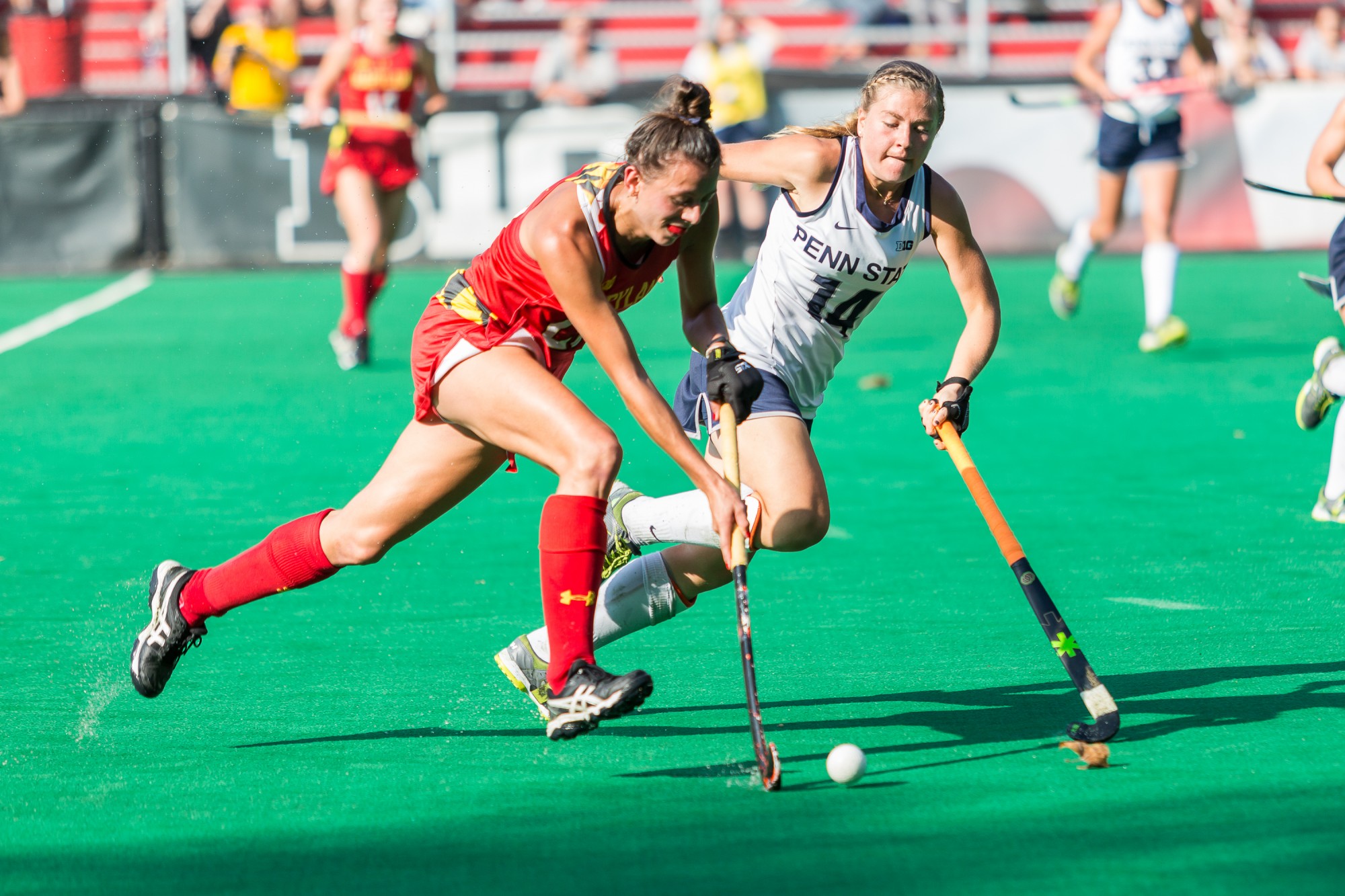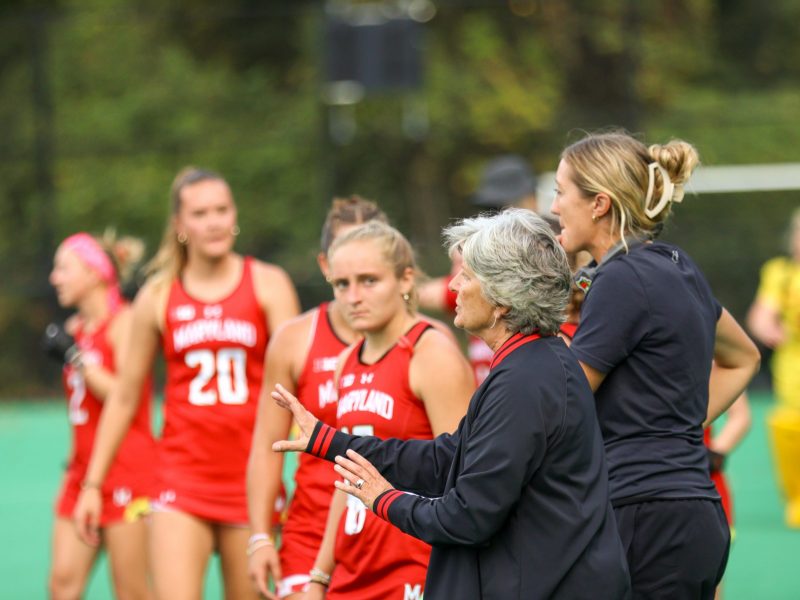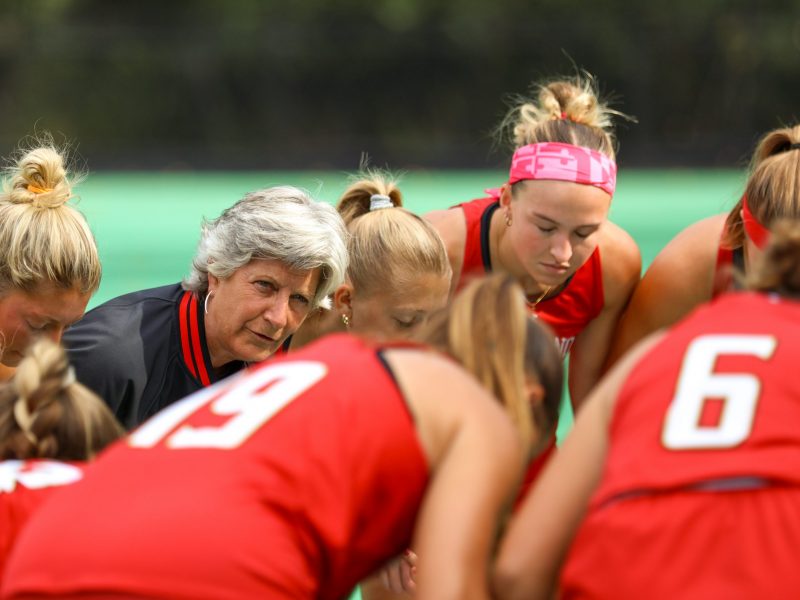Maryland field hockey defender Carrie Hanks heard her teammates cheering around her, but she couldn’t tell what happened.
Hanks couldn’t find the ball after receiving it on the left side of the circle in the second overtime period against Penn State on Sunday afternoon. By the time she spotted the ball, it was in the back of the net from her no-look strike.
The Terps rushed the field soon after, celebrating No. 16 Maryland’s 2-1 win over No. 6 Penn State. Defender Marissa Cutry held the Maryland flag and ran in the direction of the Terps’ band and fans. The Terps alternated who held the flag while screaming.
It was a season-defining win for coach Missy Meharg’s squad after the Terps lost three of four games toward the end of September. The veteran coach said this particular team is fun because she never knows what will happen. On Sunday, it escaped with its second victory against a top-10 foe this season.
“I don’t think I have words,” said Hanks, a senior playing her final regular-season home game. “To go off this way, it’s incredible.”
Maryland’s fourth straight win shows the Terps match up with the best of the Big Ten. That came into question during a last-second loss to Michigan, also in double overtime, on Sept. 29.
The Terps’ aggressive press kept the Nittany Lions’ attack — which entered Sunday averaging more than three goals per game — off the board for much of the first half. Penn State’s defense also limited the Terps.
Maryland’s offense didn’t let up, though. The Terps outshot the Nittany Lions, 10-3 in the first half and 21-16 overall.
Still, the Terps entered the intermission in a scoreless tie.
But both attacks appeared more aggressive minutes into the second half. In the 41st minute, midfielder Lein Holsboer took a deflected shot and turned it into a score to give Maryland a one-goal lead. However, as Meharg has warned the Terps is often the case with opposing attacks after scoring, Penn State responded just three minutes later.
Nittany Lions midfielder Abby Myers tied the game, but Maryland’s defense didn’t panic.
Holsboer said the consistency in their defensive structure was an impressive element in the backline’s performance on Sunday.
“It’s so stable,” she said.
Minutes into the second overtime, Meharg wanted Hanks on the field, so much so she placed Hanks at forward while Holsboer prioritized defense.
The decision paid off, as Hanks earned enough free space for the game-winning score.
“This is a breakthrough outcome for our team,” Meharg said. “There was great intensity. There were great segments of hockey together. We gained a lot of control.”



